One of the best ways to get the most out of your solar system investment is to consider the peak sun hour variable. Sunlight intensity varies depending on various factors. So it is crucial to analyze the peak solar panel output based on the average daily, monthly, or annual peak sun hour value. We will look at the peak sun hour factor in detail, including how it determines the ideal number of panels you need for your home. Take a look!
What is a Peak Sun Hour?
A Peak Sun Hour (PSH) is any hour during the day when sunlight or solar radiation hits an average of 1kW or 1000 watts of power per square meter. This sunlight intensity is only possible when the sun is directly above the surface, usually around midday.
But peak hours do not refer to the clock hours between sunrise and sunset. They refer to the solar insolation an area would receive at the highest intensity of sunlight. So if your locality receives 8kWh/m2 in one day, it has eight peak hours.
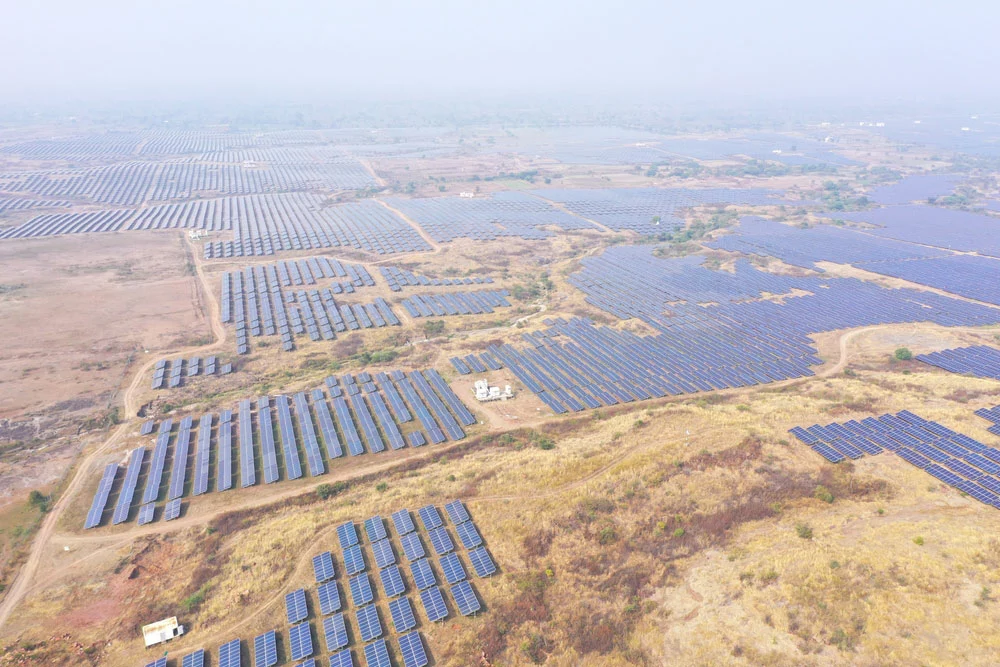
A solar farm under maximum direct sunlight
Scientists use peak hours to test and rate solar panels in labs. They expose the solar panels to 1000W/m2 of sunlight per hour and measure how much energy they produce at optimum operating conditions. But the power rating will be lower in real-world applications due to system losses caused by temperature and other factors.
What You Should Understand About Peak Sun Hours
Knowing the peak sun hours for your state or area helps determine the ideal solar panel installation size to place on your roof. More importantly, it can help you calculate whether a solar installation makes economic sense.
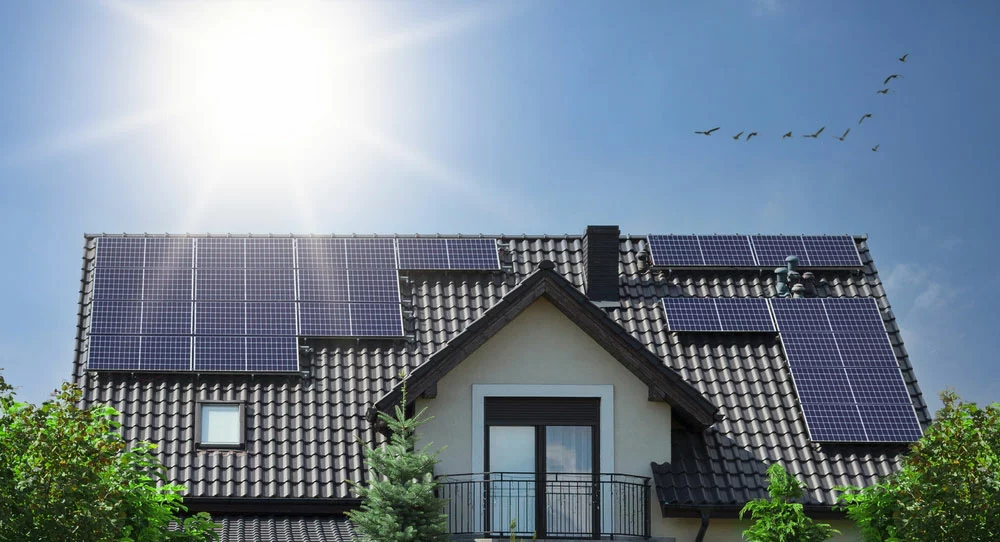
Solar panels on a rooftop under a clear sky
You can compare the average peak sun hour with the weather forecast, which helps you plan trips or planting seasons. Therefore, you can use these figures to determine how & when to use this solar energy and how much battery storage you need to store as much charge as possible.
What Are The Ideal Peak Sunlight Hours?
Although solar is one of the cheapest renewable energy sources, your area must have enough peak sunlight hours for the investment to make economic sense. An average of four daily peak sun hours or higher is good enough in the US to generate an economical amount of solar power.
However, solar might still be viable even if your area’s sun hours are lower than four. For instance, if the utility electricity rates are high and your utility company offers net metering, you can save a lot by investing in solar. Also, state and federal tax credits can lower the installation cost further, making the project more viable.
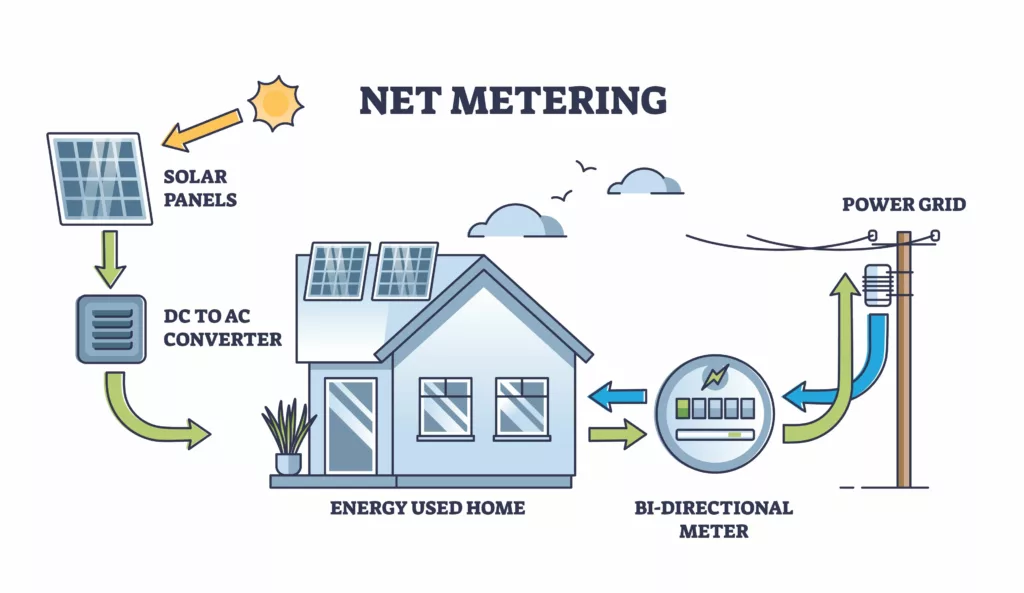
Net metering
Lastly, solar panel efficiency can make installations viable in areas with few average peak sunlight hours. The average solar efficiency stands between 15% and 20%. High-quality panels can exceed 22%. So they can squeeze more electricity out of a few peak sun hours.
Average Peak Sun Hours By State in the US
The US stretches over a broad area with different geographic conditions and climatic zones. Therefore, the average peak sun hours vary depending on the location, and this table shows how each state fairs.
| State | Average Peak Sun Hours |
| Alabama | 3.75 |
| Alaska | 2.5 |
| Arizona | 7.5 |
| Arkansas | 3.75 |
| California | 6.25 |
| Colorado | 5.75 |
| Connecticut | 3 |
| Florida | 4 |
| Georgia | 4.25 |
| Idaho | 4.25 |
| Illinois | 3.5 |
| Indiana | 3.25 |
| Iowa | 4 |
| Kansas | 4.75 |
| Kentucky | 3.5 |
| Louisiana | 4.25 |
| Maine | 3.25 |
| Maryland | 3.5 |
| Massachusetts | 3 |
| Michigan | 3 |
| Minnesota | 4 |
| Mississippi | 4.25 |
| Missouri | 4.25 |
| Montana | 4.5 |
| Nebraska | 4.75 |
| Nevada | 6.75 |
| New Hampshire | 3.25 |
| New Jersey | 3.75 |
| New Mexico | 6.5 |
| New York | 3.25 |
| North Carolina | 4.25 |
| North Dakota | 4.25 |
| Ohio | 3 |
| Oklahoma | 5 |
| Oregon | 4 |
| Pennsylvania | 3 |
| Rhode Island | 3.5 |
| South Carolina | 4.25 |
| South Dakota | 4.75 |
| Tennessee | 4 |
| Texas | 5.25 |
| Utah | 6.5 |
| Vermont | 3.25 |
| Virginia | 3.75 |
| Washington | 3.75 |
| West Virginia | 3 |
| Wisconsin | 3.5 |
| Wyoming | 5.75 |
Factors To Consider When Calculating Peak Sun Hours
Time of Day
Solar power generation is at its highest when the sun is directly above and emitting maximum solar radiation. This time of day is usually around noon and early afternoon. At sunrise and sunset, the sun illuminates the earth from a low angle, and there is higher sunlight filtration during these hours, resulting in less light intensity. You can use 1-axis or 2-axis solar trackers to try increasing the peak hours. The adaptive solar panel tilt angle places the solar cells under direct sunlight daily.
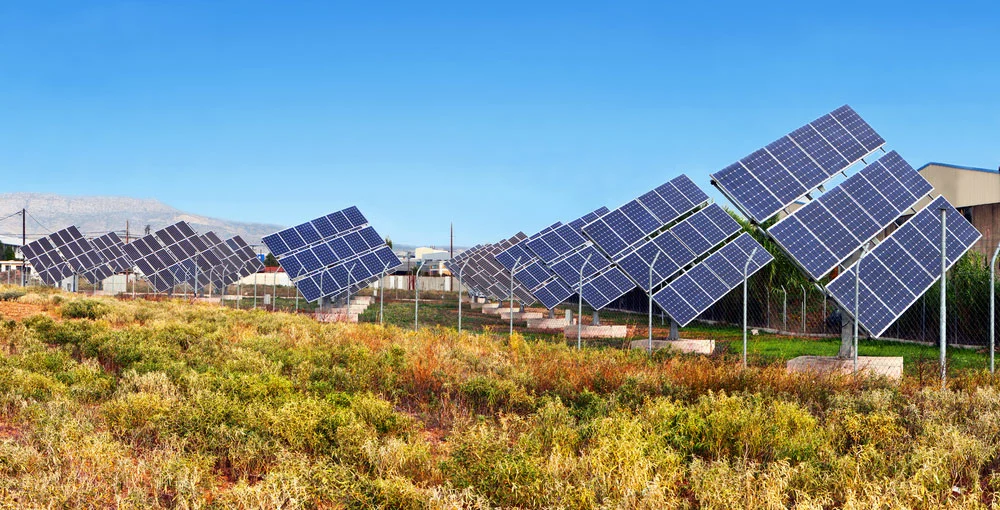
Solar panels installed on trackers
Geography
Areas closer to the equator experience an abundance of peak sun because the earth’s tilt focuses more sunlight around the tropics. Therefore, states or countries near the equator have a higher solar power generation capacity than those further away.
Season
Solar cell panels still generate electricity from sunlight during cloudy, rainy, and snowy days. However, you can only hit peak sun hour when the sun is out and its solar radiation peaks. Therefore, peak sun hours are more during the sunny summer months than during winter.
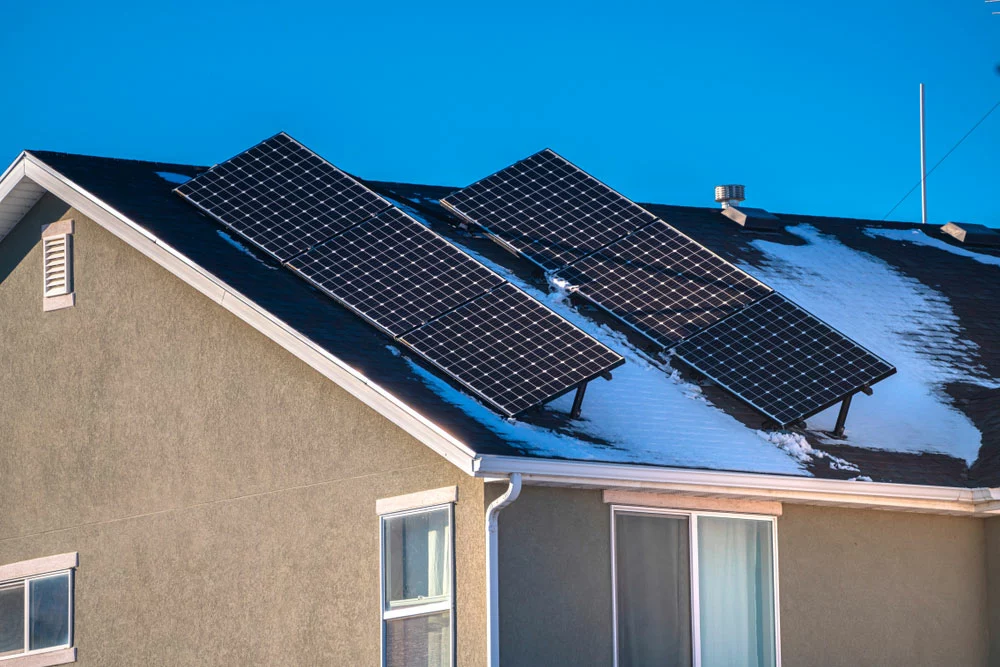
Solar panels on a roof during winter
How To Calculate Solar Output Using Peak Sun Hours
If you live in Montana (4.5PSH) and your household consumes 20kW daily, you need a solar panel system to match this consumption. Let’s say you are considering 300W or 400W solar panels.
The daily solar panel output from the 300W system will be 1.3kWh.
300W x 4.5PSH = 1350Wh or 1.3kWh
To produce 20kW to match your home’s electric usage, you need 15 solar panels.
20/1.35 = 14.8. There is no 0.8 of a panel, so you need 15 of them.
With the 400W, you will get 1.8kWh
400W x 4.5PSH = 1800Wh or 1.8kWh
You will need 12 of these panels to power your home.
20/1.8 = 11.1, which is 12 panels
How To Take Advantage of Peak Hours of Sunlight
Since the hours of peak sunlight vary depending on various factors, it is vital to take advantage of it by doing the following.
Leverage Net Metering
If your panels generate more power than you consume, you can supply the excess electricity to the electrical grid. This power will earn you credits that offset your utility bills monthly.
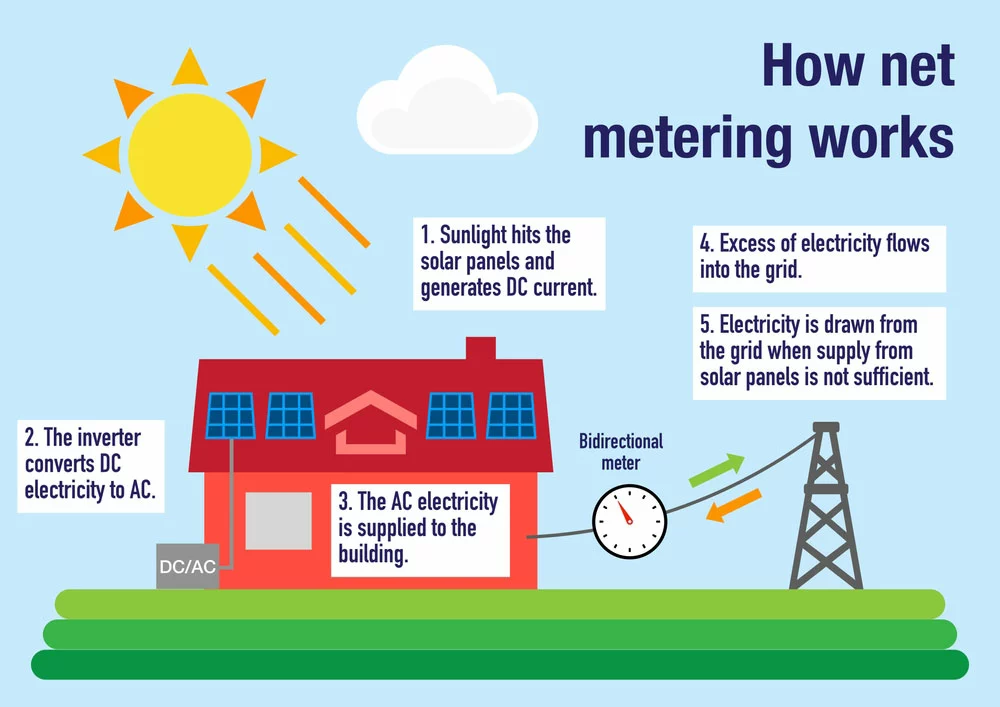
How net metering works
Invest in Battery Systems
If you live off the grid, you must find a way to power your home after the sun sets. With the advancements in battery technology, you can store all the excess electricity generated at peak hours for nighttime use. So you should invest in a high-quality solar battery pack and possibly more panels since you will need to tap more sunlight during winter. You will need to do some math to determine the ideal battery size for your home.
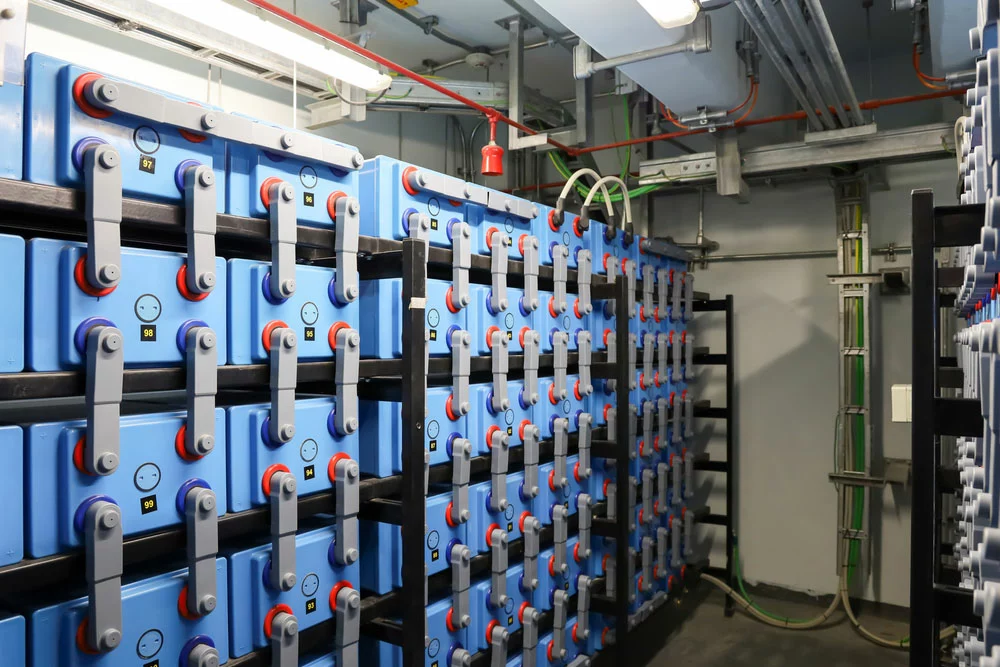
A large-scale battery storage system
Minimize Usage During Peak Hours
To maximize the power that goes into the grid or the backup battery (for off-grid solutions), find ways to reduce energy consumption during peak sunlight hours. This low power consumption will ensure you supply enough power to the grid to lower your utility bills or store enough power for nighttime use.
The ideal would be to set up a net-zero solar power system. Any excess amount of power your panels generate during summer should be more than or equal to the net energy you consume during winter.
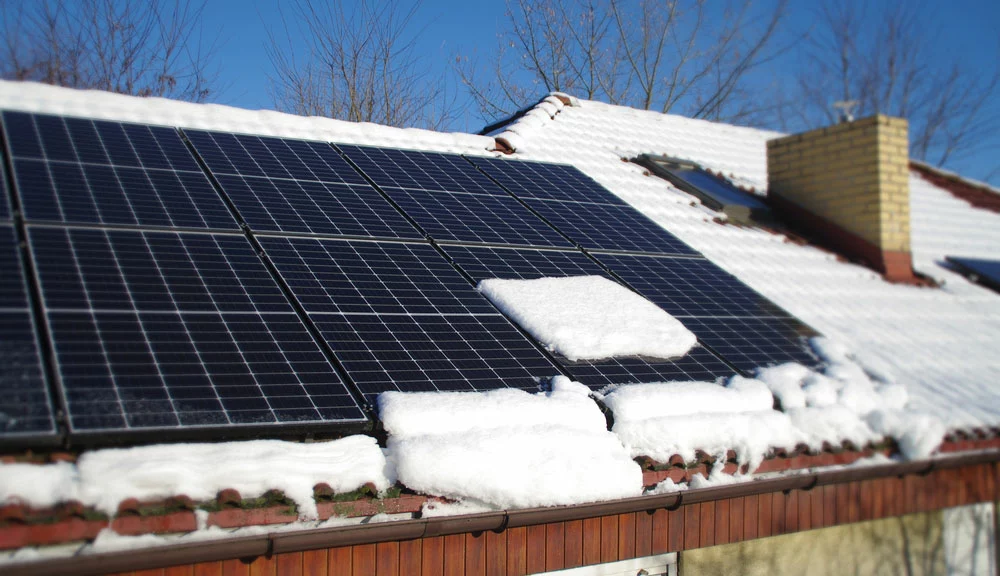
Solar panels harvest solar power during winter
Also, the extra power you sell to the grid during peak daylight hours should be more or the same as what you draw from the grid at night. In such a case, the utility power bills should be low or zero when summed up for the entire year.
Wrap Up
In conclusion, the peak sun hour factor is critical in determining various aspects of a solar system, including its size and economic viability. And as you can see above, it varies widely depending on the state. That’s it for this article. If you have any questions/comments or think we left something out, reach out via the contact section, and we’ll get back to you asap.
